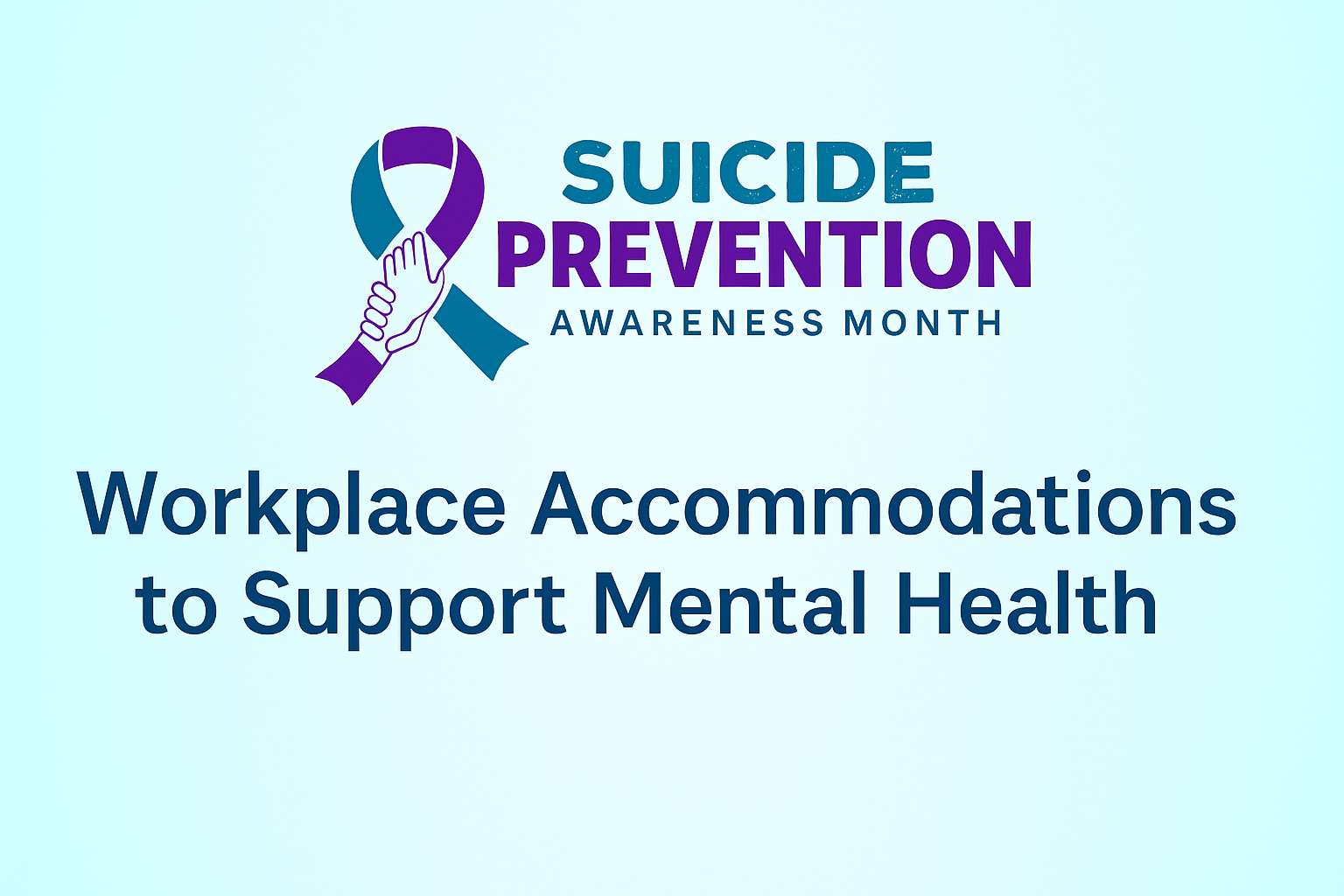September is Suicide Prevention Awareness Month, and this year’s theme — Start a Conversation. Be the Difference. — is a reminder that mental health needs to be at the center of workplace conversations. While awareness is growing, the reality is that many employees continue to struggle with anxiety, depression, and burnout. For some, these challenges go beyond wellness and rise to the level of a disability under the Americans with Disabilities Act (ADA).
The encouraging news is that more employees feel safe speaking up about what they’re going through. This openness is an important first step — but it also means HR teams and managers must be ready to respond with compassion, consistency, and compliance. Not surprisingly, mental health has become the number one reason workers ask for adjustments to their jobs — whether that’s flexible scheduling, more breaks, or the option to work remotely.
For HR and managers, that means a growing number of requests to review, respond to, and track. Supporting employees is important, but mental health accommodations can be complex. The good news? With the right process in place, employers can balance compassion and compliance — while helping people stay healthy and productive.
When Mental Health Qualifies as a Disability
Under the Americans with Disabilities Act (ADA), employers with 15 or more employees are required to provide accommodations for disabilities, and mental health conditions often count.
The law defines a disability as something that limits “major life activities” like thinking, concentrating, eating, or sleeping. Conditions such as depression, PTSD, bipolar disorder, and obsessive-compulsive disorder almost always qualify. Anxiety and ADHD can qualify, too, depending on how much they affect someone’s daily functioning.
Employers cannot diagnose, but they can request documentation if a disability isn’t obvious. The bottom line: if a mental health challenge makes it hard for an employee to manage everyday tasks, it likely deserves accommodation.
What “Reasonable Accommodations” Look Like
A reasonable accommodation is any change that helps an employee do their job. There’s no official checklist — it’s about having an open conversation, called the interactive process, to figure out what makes sense.

Making It Comfortable to Ask for Help
Even though employees are more open about mental health than in the past, talking about it at work can still feel intimidating. That’s why it’s so important for employers to create a process that feels safe, private, and easy to use.
Clear communication about rights, designated HR contacts, and even private online request portals can all make the process less stressful. When employees feel confident they won’t face stigma or awkward conversations, they’re much more likely to ask for the support they need.
Why Managers Need Training
Nearly half of employees go to their manager first when asking for an accommodation. That makes manager training crucial. Without it, managers may dismiss requests, break confidentiality, or unintentionally create compliance issues.
Managers don’t need to be experts in the ADA, they just need to know how to listen, respond with empathy, and pass the request along to HR. A simple, “Thank you for sharing, let me connect you with HR so we can support you,” goes a long way.
Keeping the Process Moving
Not every employee will say, “I need a reasonable accommodation.” Sometimes they’ll simply mention they’re struggling or having a hard time. That’s enough to start the interactive process.
To ensure requests don’t stall, employers should document every step — from the first conversation to follow-ups. This helps employees get the support they need while also keeping the organization compliant.
Final Thought
Mental health accommodations aren’t just about compliance; they’re about showing employees they matter. By creating clear processes, training managers, and staying flexible, organizations can respond with care when someone asks for help. That small investment can make a big difference for both employees and the business.


